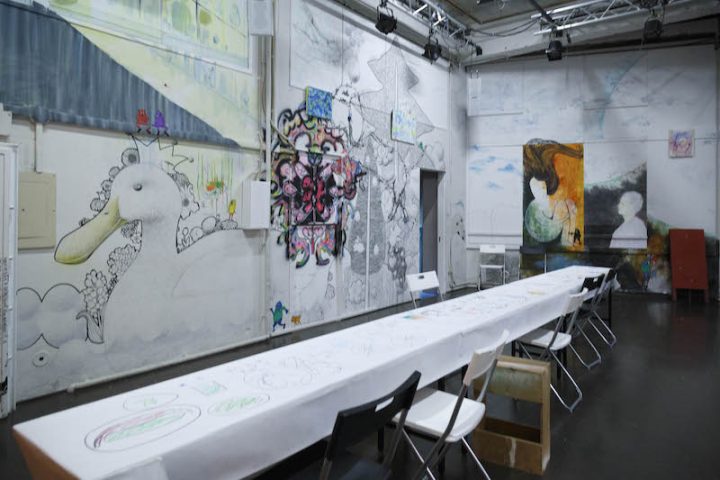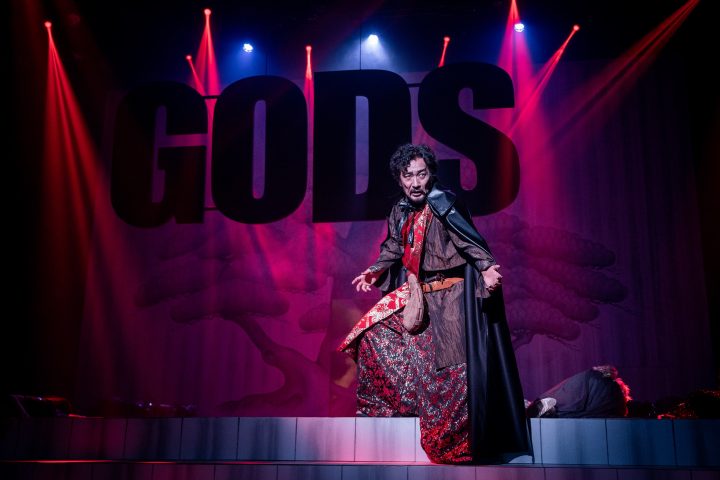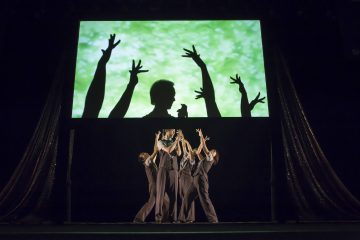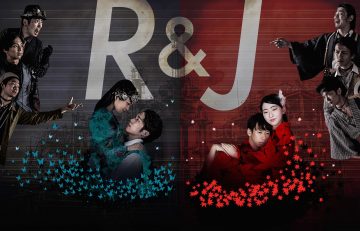Workshop by Kaiji Moriyama "Let's Dance! Let's Draw!"
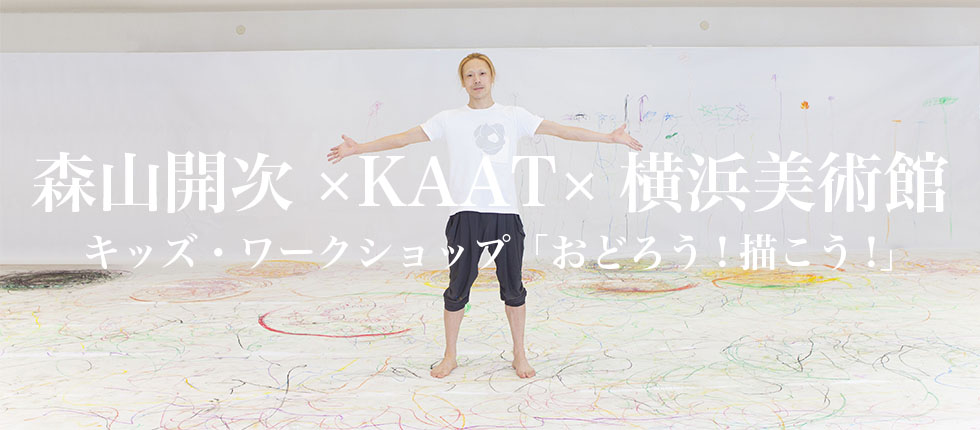
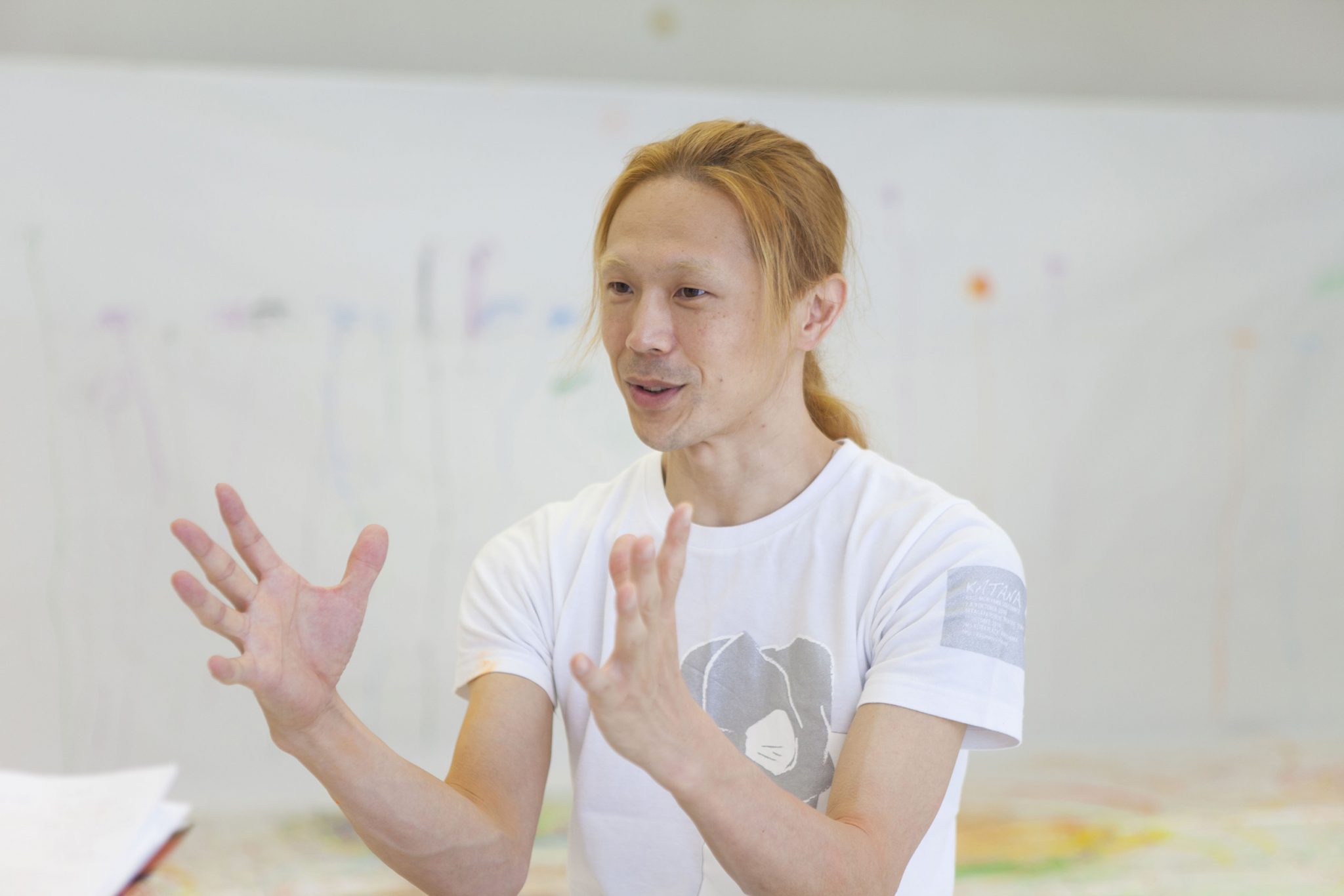
Kaiji Moriyama
<After the workshop with the children>
How did you feel about conducting the workshop with the children?
It was fun. It was my first time to hold a drawing workshop with children, so I was a little worried about what to do. But you can't overthink things like this. I'm glad I was able to actually interact with the children and create while feeling the process.
Even if you plan a workshop thoroughly, you can't make it a good one. Because no matter how much you plan, you can only do today's movements today. In today's workshop, we tried to "follow the line you drew and check the trajectory." Approach the line you drew by adding movement. Actually, I came up with this idea by watching the flow of the moment. I want to praise myself for noticing it. (laughs)
I like drawing, and I often draw various patterns in the air while moving. Today I was doing something called "letter dance," and this was my chance to try it out with the kids.
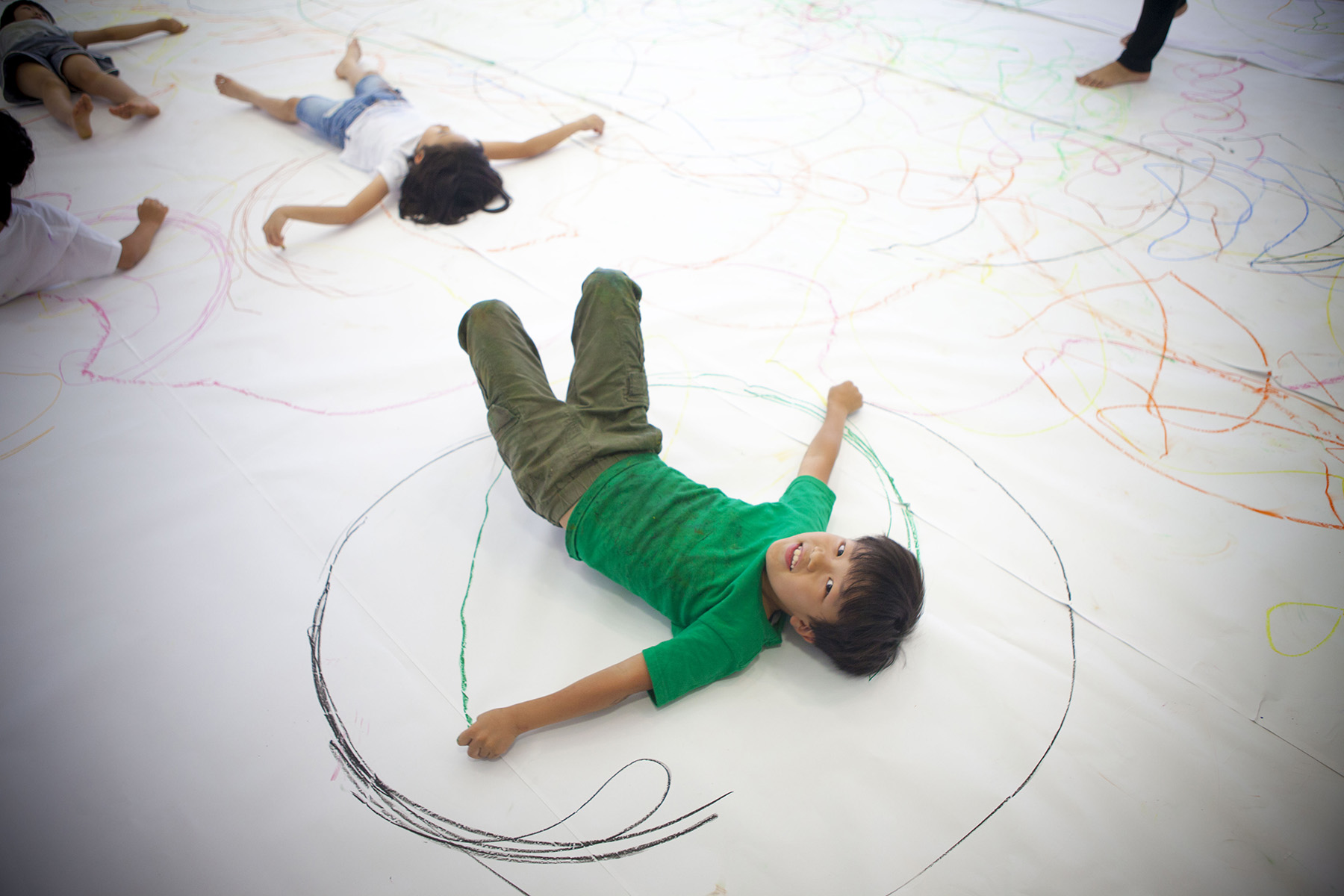
Hold a crayon in each hand, lie on your back and draw an arc using only your hands, centered around yourself.
The target audience was elementary school students in grades 1 to 4. What did the children think?
The younger elementary school children who participated this time are an honest and flexible age group. I was able to return to my childhood together with the children. This time, I let them draw freely on a large piece of paper that looked like a canvas. Recently, especially in cities, there are fewer places where you can let yourselves out. Children are always restricted, such as being told "you can't do that." But just for today, they were able to doodle as much as they wanted on a large piece of paper. It was fun.
What was the experience of drawing while dancing?
I don't think there is a distinction between art and dance. In terms of expression, I think that music and calligraphy are linked little by little. They both use the body as a medium. Painting is the same as dance, and is also a form of physical expression. I think the difference is what you use to express the image. Any expression cannot exist without physical involvement.
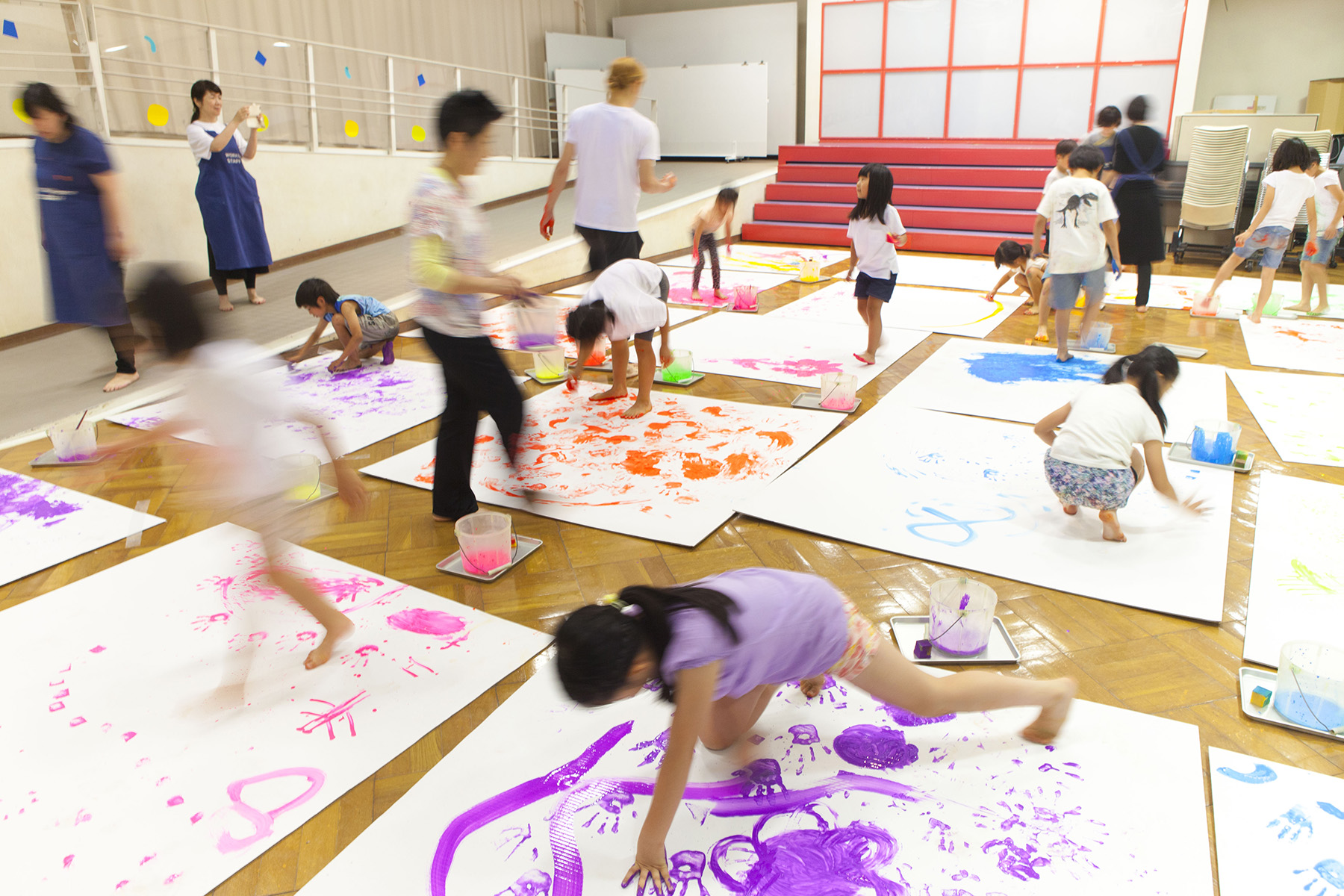
Each person will paint a large canvas using their hands or a sponge.
What do you think about the collaboration between KAAT and the Yokohama Museum of Art?
I believe that art is something that brings people together, so in that sense, it's good for the local community when theaters and art museums work together.
I think there is a kind of local pride that only people who live there have. Kanagawa Prefecture has a unique culture, and I think it's wonderful that theaters and art museums are connected.
Moriyama-san, you are from Sagamihara, Kanagawa Prefecture. How do you feel about working in Kanagawa Prefecture?
I was born and raised in Sagamihara, and when I entered the world of theater I moved to Tokyo and left my hometown. I'm still active in Tokyo, but Sagamihara is a place I can easily return to.
I'm happy to be able to work in my hometown of Kanagawa. Dance can play a role in praying for one's hometown. For example, dances such as shrine maiden dances and Bon Odori are often a medium for praying for something in the land. There is a strong sense of dancing in the land. So I'm really happy to be able to dance in my hometown.
What are the highlights of the new "Alice in Wonderland" production at KAAT?
We are in the middle of production now. We are having various dancers express themselves with their bodies, and we are currently struggling with this. The original work was originally a piece by Lewis Carroll that was based on the theme of children's imagination, depicting the world of imagination that the young girl Alice sees in her dreams. For adults to express the world of children means that the imagination of adults is just as amazing as that of children. I want adults to show their imagination as well. My method of expression is dance, so I want children to see the imagination that comes from the body, and what I imagine and create with my body.
Did you discover anything during this workshop that could lead to a new stage production?
The white canvas was dyed with crayons in no time. It was made in no time at all. Colors, lines, pictures. I felt the energy that was born from their imagination. Their imagination was expressed concretely and energy was born. I want to make use of that energy on stage. I don't want to lose to the energy of these children.
I can draw, but I always try to make things neat and tidy. The pictures that children today draw are not something you can draw just by thinking about it. I sometimes feel jealous of the improvisation that goes beyond creativity and the imagination of children.
Since it is a stage play, there is a schedule and a script. It will not work if you just let your imagination run wild. It is created by finding a balance between improvisation and planning.
But like a child who doesn't calculate and tries to "draw well," I want to create a stage that has parts that can be unhinged and parts that can be put together. There is a script, but I want to leave some room for improvisation, something that can be created live, that's what I thought while watching the children today.
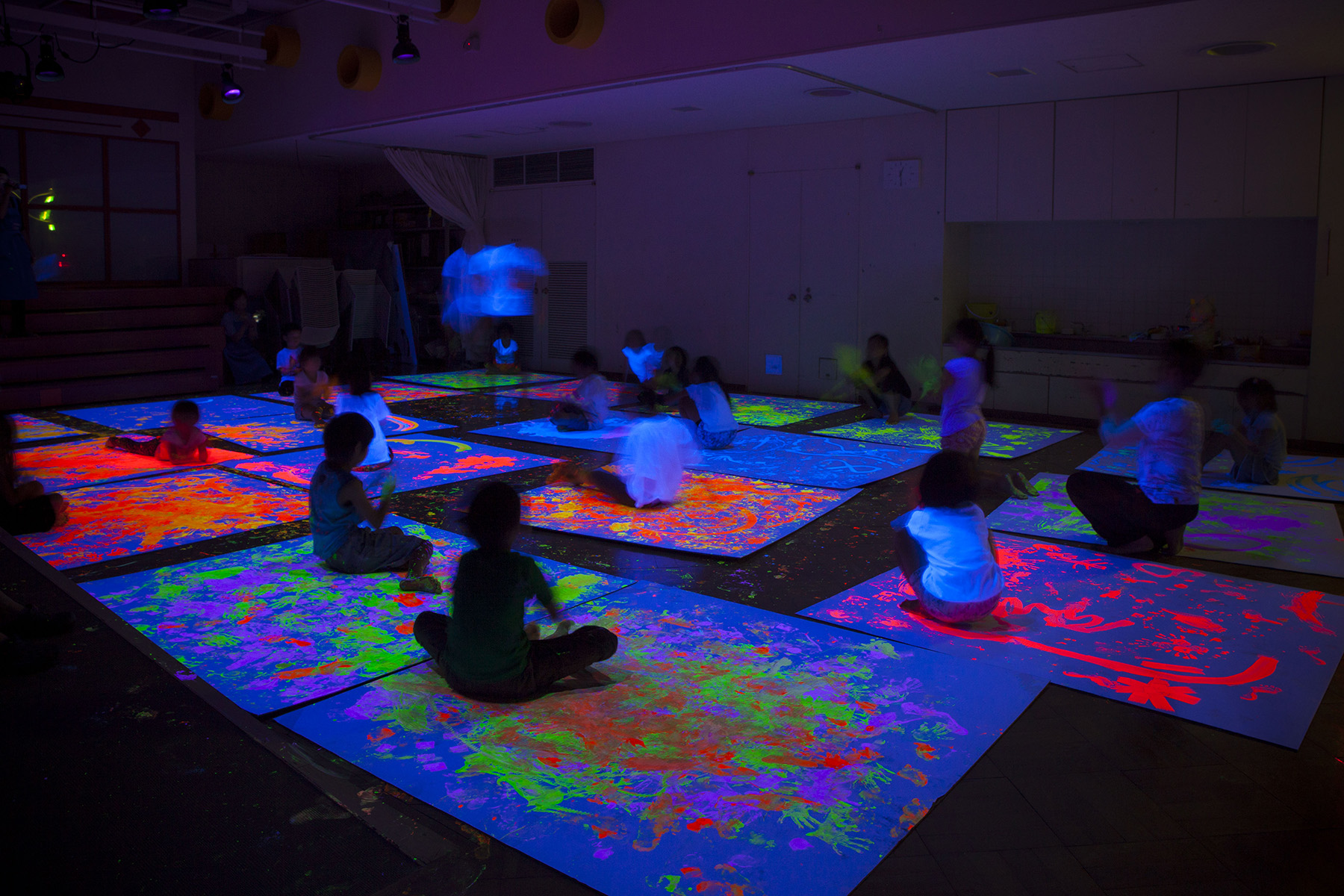
When the spell is chanted, the lights go out and only the painted areas are illuminated by the black light.
The painted hands and face will also glow softly.
<Collaboration between theater and art museum>
Every year, KAAT produces a variety of performances entitled "Kids Programs." The audience is children and adults. The goal of the program is to "create cutting-edge and rich performance pieces that are not just for children, but serve as a mirror of the times, and to create truly creative works that can reach both children and adults together with leading artists, actors, and performers."
In addition to the exhibition space where numerous exhibitions are held, the Yokohama Museum of Art also has a dedicated atelier for children, which is rare nationwide. The extremely popular "Parent-Child Free Zone" provides an environment where children can freely draw pictures and play with clay, and where they can enjoy creating shapes using their own imagination, rather than "teaching art".
This workshop was planned and produced in collaboration with the Yokohama Museum of Art Children's Atelier as part of the Kanagawa Arts Theatre's "KAAT Kids Program 2017." The Kanagawa Arts Theatre, which knows all about Moriyama's possibilities beyond dance, and the Yokohama Museum of Art Children's Atelier, professionals in children's art education, have collaborated to plan a new dance workshop and a new art workshop.
"I had felt that when children's bodies move, their minds also relax, but I could see how the children's minds were gradually opened up by dancing with Kaiji, even in the short period of one hour," says Tomomi Okazaki, chief educator at the Yokohama Museum of Art's Children's Atelier.
"Drawing tends to take on a concrete form, but the lines I drew today were the traces of a dance. I couldn't draw them consciously. Drawing a line as it is was an abstract idea, but I think it got through to the children." The experienced staff of the children's atelier, who provided full support for the workshop, were also amazed at the expressions the children had created by opening their hearts, and at Moriyama's skill in bringing them out.
Kanagawa Arts Theatre Production Division Producer Tomoko Konuma also commented, "I was impressed by Kaiji's work. And the sense of security in the children's studio. I felt the depth of their experience, that they would be okay no matter what happened and that they would be accepted. The children spread out the paper as much as they could in a space that was not their everyday life, and each child was able to express their individuality and had a happy look on their face. It was a really good workshop."
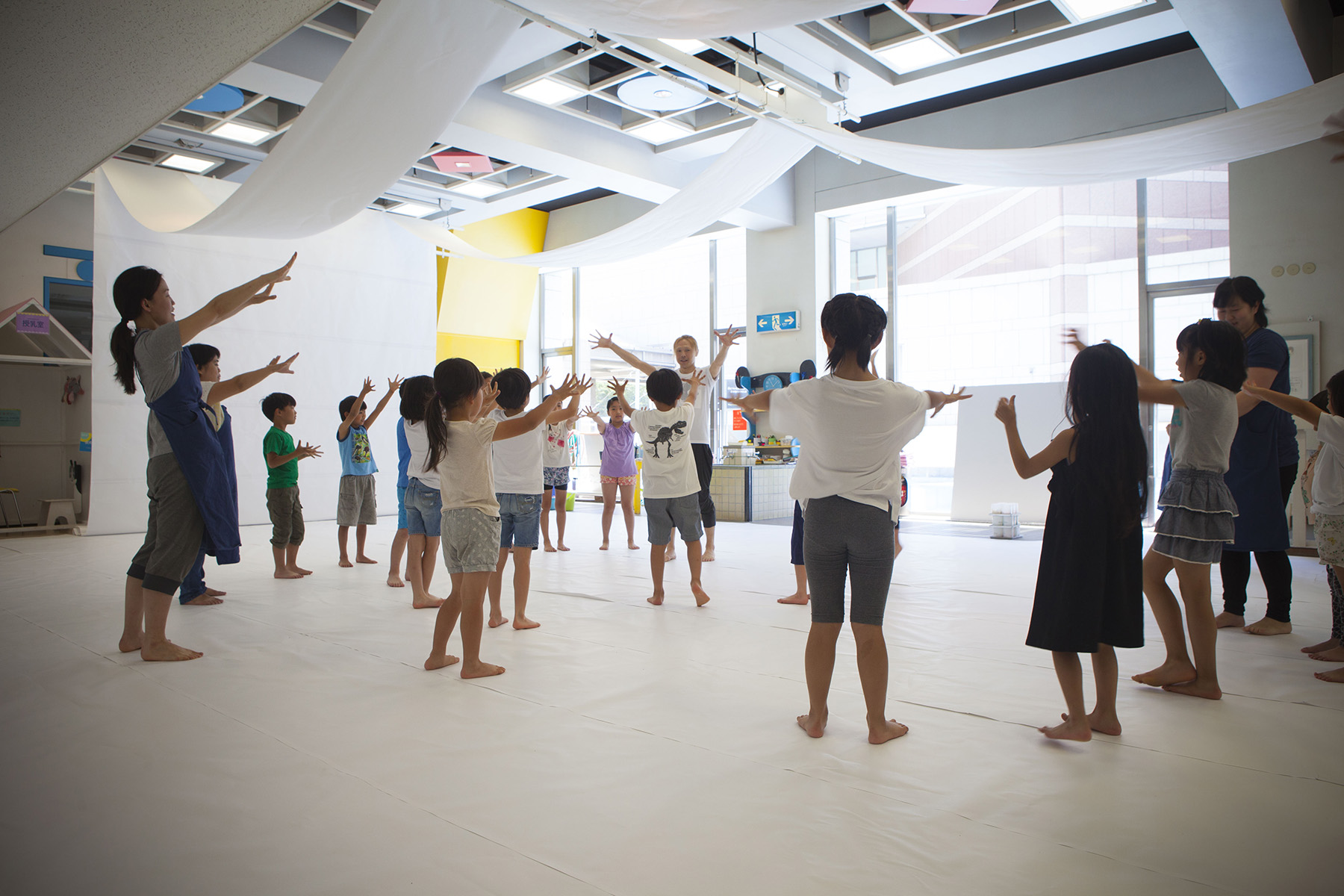
• KAAT Kids Program 2017 "Alice in Wonderland"
Date: July 22nd - August 6th, 2017
Price: Adults 3,500 yen, Children (4 years old and over to high school students) 1,500 yen, Parents and children (adults and children) 4,500 yen
Organized, planned and produced by Kanagawa Arts Theatre
Direction, choreography and art direction: Kaiji Moriyama
Original story by Lewis Carroll
